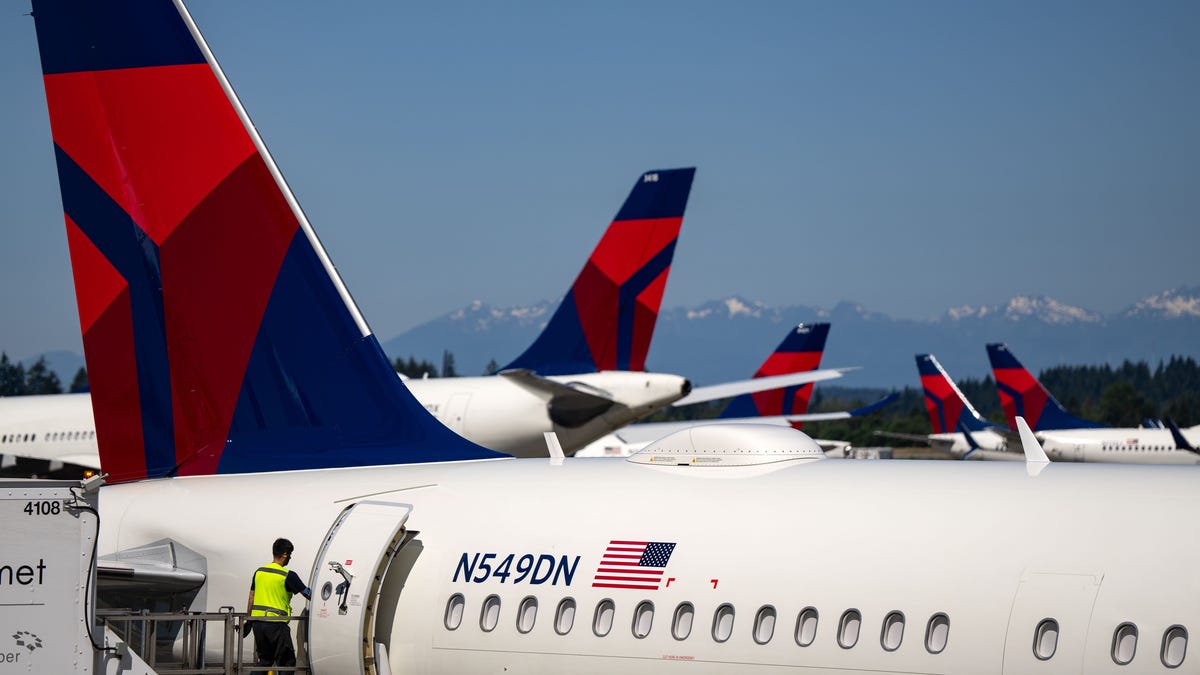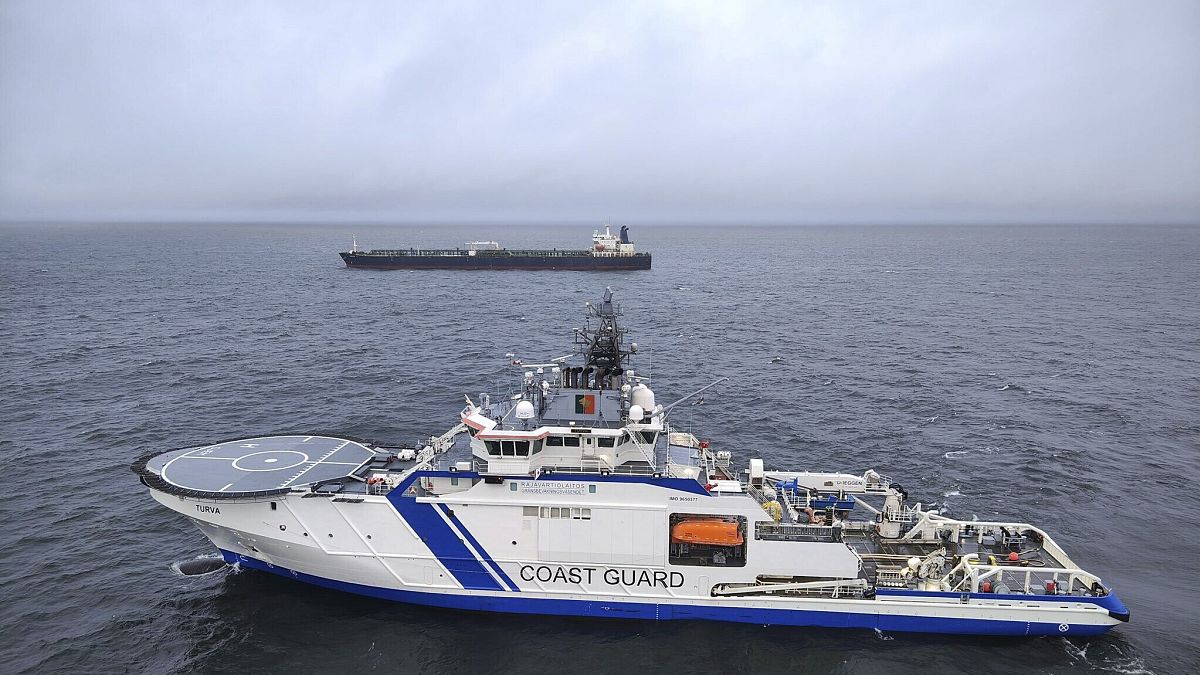An Alaskan mayor is seeking support for a scheme that would see homeless people flown to warmer climates as deaths from exposure reach all-time highs.
Anchorage mayor Dave Bronson’s unfunded proposal would see people offered one-way flights to a destination of their choice.
Last year, eight people – a record for the city – tragically lost their lives from exposure. The closure of a large arena this year, which had served as a makeshift city shelter, is expected to exacerbate the crisis as temperatures dip below zero.
Bronson explained: ‘Someone says, “I want to go to Los Angeles or San Diego or Seattle or Kansas,” it’s not our business. My job is to make sure they don’t die on Anchorage streets.’
A one-way ticket to Los Angeles cost $289 on Tuesday, which Bronson said was much cheaper than the $100 or so it costs to house someone every day.
A tent city for homeless people shown in Anchorage on July 26, 2023, as Dave Bronson announces plans to offer residents a one way flight out of the city, if it can get funding

Shawn Steik poses for a photo Wednesday, July, 26, 2023, in downtown Anchorage, Alaska. Steik said he and his wife would likely fly to Seattle if Mayor Dave Bronson’s plan goes through

An outdoor tent city on July, 26, 2023, in Anchorage. Critics have slammed the proposal for not tackling the root of the problem, and treating homeless people as ‘pawns’
The Mayor explained his strategy at a news conference on Tuesday: ‘When people approach us and want to go to someplace warm or they want to go to some town where they have family or friends that can take care of them, if they choose to go there, we´ll support that.’
If the program moves forward, people can choose to relocate to the Lower 48 states or somewhere else in Alaska where it might be warmer or where they have relatives.
With the pandemic, officials configured the roughly 6,000-seat Sullivan Arena to be a mass-care facility.
It served more than 500 homeless people in the winters until city officials decided to return it to its original purpose hosting concerts and hockey games.
The arena’s closure on May 31 left hundreds of people with nowhere to go.
Anchorage has no low-barrier, walk-in shelter.
While some smaller shelters have opened, there is no large care facility in the city and homeless services are limited.
Waitlists for a bed in private shelters and transitional housing are long in the city.
Nine smaller shelters are able to provide 614 beds for the homeless.
A plan to build a large shelter and navigation center fell through when Bronson approved a contract without approval from the Anchorage Assembly.
The lack of shelter space this winter could leave an estimated 750 unhoused residents in the cold.
Bronson’s sudden proclamation comes at a time of political tension over the homelessness crisis between the Republican mayor and the liberal-leaning Anchorage Assembly.
Critics have also slammed the move as a ‘distraction’ from Anchorage’s issue of homelessness.
The American Civil Liberties Union of Alaska said with winter approaching, it’s ‘past time for state and local leaders to address the underlying causes of homelessness.
‘Airplane tickets are a distraction, not a solution.’
Dr Ted Mala, an Inupiaq who in 1990 became the first Alaska Native to serve as the state’s health commissioner, said Anchorage should be working with social workers and law enforcement to discover people’s individual reasons for homelessness and connect them with resources.
Mala said: ‘People are not pawns, they’re human beings.’
Aside from better weather conditions, there was no evidence a move elsewhere would enable homeless people to access better support.
Passing the issue on, a number of US cities – including San Francisco, Seattle and Portland – have also offered bus or plane tickets to homeless residents.
About 43% of Anchorage’s more than 3,000 unsheltered residents are Alaska Natives.
Bronson’s proposal also drew harsh criticism from those who called it culturally insensitive.
Christopher Constant, chair of the Anchorage Assembly, said: ‘The reality is there is no place to send these people because this is their land.
‘Any policy that we make has to pay credence to that simple fact. This is Dena’ina [Alaska Native] land, this is Native land.
‘And so we cannot be supporting policies that would take people and displace them from their home, even if their home is not what you or I would call home.’
Still, Bronson maintains that the plan – which has no secured funding – is more ethical than allowing people to freeze this winter – when average temperatures can drop as low as -10C.
He said: ‘I have a moral imperative here, and that’s to save lives. And if that means giving them a few hundred dollars for an airline ticket to go where they want to go, I’m going to do that.’
Bronson’s term is due to end on July 1, 2024. He has been Mayor since July 1, 2021.
Through his term, he has aimed to deal with Anchorage’s economic downturn, losing more than 17,000 jobs between 2015 and 2021 according to his campaign.
Crime has been another pressing issue, with Bronson pledging to improve community support and policing.
Bronson’s community development executive director is paid an annual salary of $134,992, according to his offer letter.
Some of Alaska’s homeless people welcome the offer, disillusioned with the city’s prospects and anxious about the coming winter.
Clarita Clark became homeless after her medical team wanted her to move from Point Hope to Anchorage for cancer treatment because Anchorage is warmer.
The medical facility wouldn’t allow her husband to stay with her, so they pitched a tent in a sprawling camp to stay together.
Having recently found the body of a dead teenager who overdosed in a portable toilet, Clark yearns to return to the Chukchi Sea coastal village of Point Hope, where her three grandchildren live.
‘I got a family that loves me,’ she said, adding she would use the ticket and seek treatment closer to home.
Shawn Steik and his wife were forced from a long-term motel room onto the streets of Anchorage after their rent shot up to $800 a month.
Now they live in a tent encampment by a train depot, and as an Alaska winter looms they are growing desperate and fearful of what lies ahead.
The Mayor’s proposal gave Steik a much-needed glimmer of hope. He would move to the relative warmth of Seattle.
‘I heard it’s probably warmer than this place,’ said Steik.

Mayor Dave Bronson speaks during a meeting on September 28, 2021, in Anchorage, Alaska

Clarita Clark and Philip Gregory pose for a photo Wednesday, July, 26, 2023, near downtown Anchorage, Alaska. They said they would fly home to Point Hope, Alaska, if Anchorage Mayor Dave Bronson’s plan goes forward to buy homeless people plane tickets

Tents fill a homeless camp near Davis Park in Mountain View, Monday, July 3, 2023, in Anchorage, Alaska

People walk towards East Third Avenue from a homeless encampment on Wednesday, June 21, 2023, in Anchorage, Alaska
Bronson admitted the plan had not sourced funding, and has put Alexis Johnson – the city’s homeless director – in charge of coming up with a plan for the program.
DailyMail.com contacted Johnson for comment.
When pressed on whether he was simply passing the responsibility on, Bronson said that Anchorage has 40% of the state’s population but 65% of its homeless population.
He said: ‘The taxpayers to whom I’m responsible to [sic] can’t keep footing the entire bill. We need a statewide solution to a statewide problem.’
Homeless people can register and vote in all 50 states, though turnout is low ‘likely because voting procedures are long and exhausting, especially for the homeless,’ FindLaw note.























/cdn.vox-cdn.com/uploads/chorus_asset/file/24924653/236780_Google_AntiTrust_Trial_Custom_Art_CVirginia__0003_1.png)




/cdn.vox-cdn.com/uploads/chorus_asset/file/25672934/Metaphor_Key_Art_Horizontal.png)

